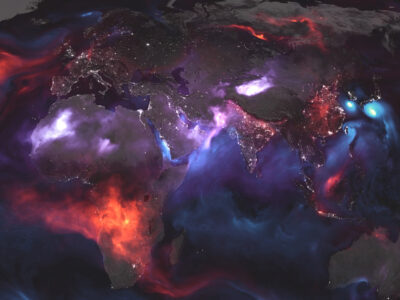
The global trend toward hotter summers could make parts of the Middle East and tropics “practically uninhabitable” by the end of the century, new research published this week contends.
The work, by climate scientist James Hansen and Makiko Sato of Columbia University’s Program on Climate Science, Awareness and Solutions, builds on earlier research showing that summers generally are more often becoming hotter than the average recorded between 1951-1980. The new paper updates their analysis of the data and looks at how temperatures are changing region by region. The authors conclude that summers in particular have continued to grow hotter, and that extreme heat events are occurring more frequently.
They warn that the increased heat intensifies drought in the subtropics, and combined with other effects of climate change such as sea level rise, increased floods and impacts on human health, could be devastating. And they argue that a tax or fee on carbon is the only way to quickly address the threats from climate change.
“The overall message that climate science delivers to society, policymakers and the public alike is this: We have a global emergency,” writes Hansen in an accompanying summary of the paper.

Hansen has in the past referred to the temperature shifts as “loading the climate dice.” Because of the natural variability of climate, some summers are colder and some hotter than others. Plotted on a graph over time, these fall into a bell curve on which most summers fall somewhere in the middle. Imagine six-sided dice: two sides are “normal,” two are “hot” and two are “cold.”
Now, shift the graph toward hotter: Now the “average” summer is hotter than before. On your dice, perhaps three sides are “hot” and just one “cold” – raising the odds that summer will be hotter than what used to be considered “normal.” This is what is happening around the world, in varying degrees.
“Global warming of about 1°F (0.6°C) over the past several decades now ‘loads the climate dice,’” Hansen said. “We showed earlier that the ‘bell curve’ of seasonal mean temperature anomalies has shifted so far that people can notice that extreme hot summers now occur more often than they did 50 years ago. However, we show here that there are strong regional variations in this bell curve shift, and that the largest effects occur in nations least responsible for causing climate change.”
The paper, “Regional climate change and national responsibilities,” was published Wednesday in Environmental Research Letters. The authors present data showing variations in how much hotter things have gotten in different regions of the world.
The shift in summer temperatures in the United States is greater than the warming in winter. As a result, people are likely to notice summers getting warmer, but not necessarily winters.
According to Hansen, summers cooler than the average 1951-1980 summer still occur, but only about 19 percent of the time. Extreme summer heat, defined as 3 standard deviations or more warmer than the 1951-1980 average, which almost never occurred 50 years ago, now occur with a frequency of about 7 percent.
By contrast, Hansen notes, in the Mediterranean and Middle East, “every summer is now warmer than the average 1951-1980 climate, and the period with ‘summer’ climate is now considerably longer.” The changes are “far exceeding natural variability” in the climate, he said.
“Given that summers were already very hot in this region, the change affects livability and productivity,” Hansen writes. “The tropics and the Middle East in summer are in danger of becoming practically uninhabitable by the end of the century if business-as-usual fossil fuel emissions continue, because wet bulb temperature could approach the level at which the human body is unable to cool itself under even well-ventilated outdoor conditions,” he writes.
“Lesser warming still makes life more difficult and reduces productivity in these regions, because temperatures are approaching the limit of human tolerance, and both agricultural and construction work are mainly outdoor activities.”
Europe is showing more warming than in the United States. And in China, the warming trend should be noticeable in both summer and winter to people old enough to recall the seasons of 50 years ago, the researchers said. In India, the shift is even larger.
Hansen notes that “increasing temperature seems to have a significant effect on violence and human conflict, as indicated by a body of empirical evidence in a rapidly expanding area of scientific study.” That would include a 2015 study co-authored by Earth Institute scientists that concluded that the drought in Syria influenced the outbreak of the civil war there. Hansen cites other studies that have correlated increases in violence with increases in temperature.

The paper also updates an analysis of how different countries have contributed to climate change, primarily through burning fossil fuels and emitting carbon dioxide and other gases that contribute to the warming. While China has taken the lead in overall emissions today, historically the United States and Europe each are responsible for more than a quarter of the climate change we see today, the paper contends.
The authors argue that the developed countries bear a greater responsibility to address the issue. It also argues that the historic climate agreement reached in Paris in December, in which the world’s nations agreed on goals for reducing emissions, won’t fix the problem.
“We argue that country-by-country goals, the approach of the 21st Conference of the Parties [in Paris] cannot lead to rapid phase-down of fossil fuel emissions, as long as fossil fuels are allowed to be the cheapest energy,” the authors say. The only solution, they add, is to start imposing a fee on carbon that recognizes the negative impact that burning up fossil fuels has had on the environment.


